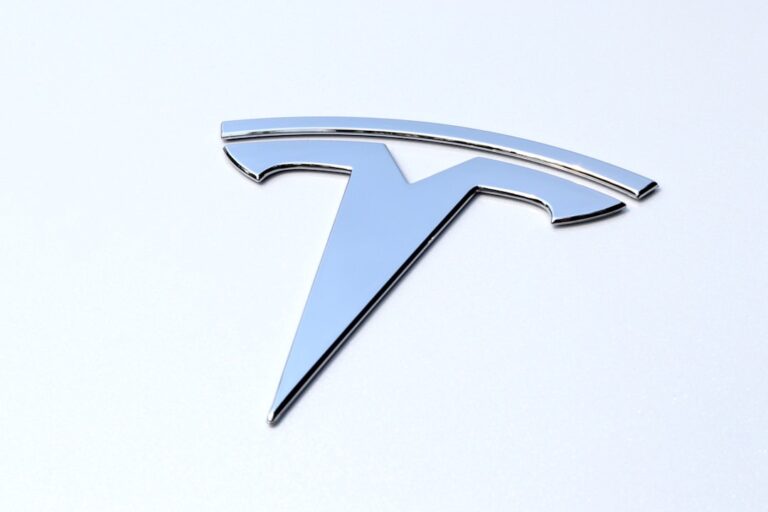
**Title: Navigating the Road Ahead: Tesla’s Journey Towards Autonomous Driving** **
Tesla has long been at the forefront of the electric vehicle (EV) revolution, but its ambitions extend far beyond just producing eco-friendly cars. The company is heavily invested in developing autonomous driving technology, which promises to redefine the way we think about transportation. Tesla’s Autopilot and Full Self-Driving (FSD) features are designed to enable vehicles to navigate roads with minimal human intervention.
This technology leverages advanced machine learning algorithms, extensive data collection, and a network of sensors to create a sophisticated driving experience that many believe could lead to safer roads and reduced traffic congestion. The allure of autonomous driving lies not only in convenience but also in the potential for significant societal benefits. By reducing human error, which is responsible for the majority of traffic accidents, autonomous vehicles could save countless lives.
Moreover, as cities become increasingly congested, self-driving cars could optimize traffic flow and reduce emissions. However, the journey towards fully autonomous driving is fraught with challenges, including regulatory hurdles, safety concerns, and public perception. As Tesla continues to push the envelope in this domain, understanding the intricacies of regulatory approval becomes crucial for its future success.
**
The Process of Regulatory Approval for Autonomous Driving**
Regulatory Hurdles in the United States
For Tesla, this means navigating a labyrinth of federal and state regulations that govern vehicle safety standards and testing protocols. The process typically involves extensive testing and data collection to demonstrate that the technology meets safety benchmarks before it can be deployed on public roads.
Data-Driven Approach to Building Trust
Tesla has been proactive in engaging with regulators, often sharing data from its fleet of vehicles equipped with Autopilot and FSD features. This data-driven approach aims to build trust with regulatory bodies by showcasing the safety and reliability of its technology.
Global Regulatory Challenges
However, the regulatory landscape is not uniform across states or countries, leading to a patchwork of rules that can complicate Tesla’s rollout plans. As the company seeks to expand its autonomous capabilities, it must remain agile and responsive to evolving regulations while advocating for a framework that supports innovation in this rapidly changing field.
Key Takeaways
- Tesla’s autonomous driving technology is a key feature of its vehicles, allowing for advanced driver assistance and potential full self-driving capabilities.
- The process of regulatory approval for autonomous driving involves extensive testing, validation, and collaboration with government agencies to ensure safety and compliance with laws and regulations.
- Regulatory approval for autonomous driving can significantly impact Tesla’s market position by increasing consumer trust, expanding market access, and potentially leading to competitive advantages.
- Safety and ethical considerations of autonomous driving technology are crucial, as they involve potential risks, liability issues, and the need for clear guidelines and regulations to ensure public safety.
- The future of autonomous driving technology holds promise for continued innovation, improved safety, and potential societal benefits, but also requires ongoing development, testing, and consumer education for widespread adoption.
The Impact of Regulatory Approval on Tesla’s Market Position**

Regulatory approval for Tesla’s autonomous driving features could significantly bolster its market position in the automotive industry. As one of the first companies to achieve such approval, Tesla would not only solidify its reputation as a leader in innovation but also gain a competitive edge over traditional automakers who are still in the early stages of developing their own autonomous technologies. This advantage could translate into increased sales and market share as consumers gravitate towards vehicles that offer cutting-edge features.
Moreover, regulatory approval could enhance investor confidence in Tesla’s long-term viability. The stock market often reacts positively to news that indicates a company is ahead of its competitors in technological advancements. If Tesla can successfully navigate the regulatory landscape and secure approval for its autonomous driving features, it may attract more investment, further fueling its growth and expansion plans.
In an industry where technological prowess is paramount, being first to market with fully approved autonomous driving capabilities could redefine Tesla’s trajectory and influence the broader automotive landscape. **
Safety and Ethical Considerations of Autonomous Driving**
| Metrics | Data |
|---|---|
| Accident Rate | Number of accidents per autonomous vehicle mile driven |
| Response Time | Time taken for the autonomous vehicle to respond to a potential hazard |
| Compliance with Traffic Laws | Percentage of time the autonomous vehicle follows traffic laws |
| Ethical Decision Making | Ability of the autonomous vehicle to make ethical decisions in critical situations |
| Data Privacy | Measures taken to protect the privacy of individuals’ data collected by autonomous vehicles |
As Tesla advances its autonomous driving technology, safety and ethical considerations remain at the forefront of public discourse. While proponents argue that self-driving cars can reduce accidents caused by human error, critics raise concerns about the potential for software malfunctions or unforeseen circumstances that could lead to accidents.
Ethical dilemmas also arise when considering how autonomous vehicles should respond in emergency situations. For instance, if faced with an unavoidable accident scenario, how should a self-driving car prioritize the safety of its occupants versus pedestrians? These questions highlight the need for robust ethical frameworks that guide the development and deployment of autonomous driving systems.
As Tesla continues to refine its technology, addressing these safety and ethical concerns will be essential for gaining public trust and ensuring responsible use of autonomous vehicles. **
The Future of Autonomous Driving Technology**
Looking ahead, the future of autonomous driving technology appears promising yet uncertain. Tesla’s commitment to continuous improvement means that we can expect ongoing advancements in its Autopilot and FSD features. The integration of artificial intelligence (AI) and machine learning will likely enhance the vehicle’s ability to learn from real-world driving scenarios, making it more adept at handling complex situations on the road.
However, the pace of technological advancement must be matched by regulatory progress. As governments around the world grapple with how to regulate autonomous vehicles, there is a pressing need for clear guidelines that foster innovation while ensuring public safety. Collaboration between automakers like Tesla and regulatory bodies will be crucial in shaping a future where autonomous driving is not only feasible but also widely accepted by society.
**
Consumer Adoption of Autonomous Driving Features**

Consumer adoption of autonomous driving features will play a critical role in determining the success of Tesla’s technology. While many consumers are intrigued by the prospect of self-driving cars, there remains a level of skepticism regarding their safety and reliability. Education and transparency will be key in addressing these concerns; Tesla must effectively communicate the benefits and limitations of its autonomous features to potential buyers.
Additionally, as more consumers experience autonomous driving technology firsthand—whether through test drives or ride-sharing services—public perception may shift positively. The gradual introduction of these features into everyday driving scenarios can help demystify the technology and build confidence among consumers. Ultimately, widespread adoption will depend on Tesla’s ability to deliver a seamless user experience while ensuring that safety remains paramount.
**
Potential Challenges and Limitations of Tesla’s Autonomous Driving**
Despite its ambitious goals, Tesla faces several challenges and limitations in its pursuit of fully autonomous driving. One significant hurdle is the variability of road conditions and driver behavior across different regions. While Tesla’s technology is designed to adapt to various environments, unpredictable factors such as weather conditions or erratic human drivers can complicate its performance.
Moreover, competition in the autonomous driving space is intensifying as traditional automakers and tech companies invest heavily in their own self-driving initiatives. This competitive landscape means that Tesla must continually innovate to maintain its edge. Additionally, public perception can be influenced by negative media coverage or high-profile incidents involving autonomous vehicles, which may hinder consumer trust and adoption.
**
Implications of Regulatory Approval for Tesla’s Autonomous Driving**
In conclusion, regulatory approval for Tesla’s autonomous driving technology holds significant implications for both the company and the broader automotive industry. Achieving this milestone would not only validate Tesla’s innovations but also pave the way for a new era of transportation characterized by increased safety and efficiency. However, navigating the complexities of regulatory frameworks while addressing safety and ethical concerns will be paramount.
As Tesla continues to push boundaries in autonomous driving technology, it must remain vigilant in fostering public trust through transparency and education. The future of transportation may very well hinge on how effectively companies like Tesla can balance innovation with responsibility, ultimately shaping a world where self-driving cars become an integral part of our daily lives. — **Keywords:** Tesla Autonomous Driving, Regulatory Approval, Market Position, Safety Considerations, Future Technology, Consumer Adoption, Challenges **Further Reading:**
1.
National Highway Traffic Safety Administration (NHTSA) – [NHTSA Overview](https://www.
gov)
2. Tesla Official Website – [Tesla Autopilot](https://www.tesla.com/autopilot)
3. IEEE Spectrum – [The Ethics of Self-Driving Cars](https://spectrum.ieee.org/self-driving-cars-ethics)
4.
McKinsey & Company – [The Future of Mobility](https://www.mckinsey.com/industries/automotive-and-assembly/our-insights/the-future-of-mobility)
5. The Verge – [Tesla’s Full Self-Driving Beta](https://www.theverge.com/2023/10/tesla-full-self-driving-beta)
In a recent article discussing Tesla’s autonomous driving regulatory approval, it is evident that the company’s stock has been facing challenges. According to TSLA Investors, Tesla’s market turbulence has been analyzed in light of the 2025 European sales collapse and stock performance challenges. This sheds light on the broader context in which Tesla’s autonomous driving regulatory approval is taking place, highlighting the complexities and uncertainties surrounding the company’s stock performance.
Click for the latest Tesla products ready to ship right now!
FAQs
What is Tesla’s autonomous driving technology?
Tesla’s autonomous driving technology, known as Autopilot, is a suite of advanced driver-assistance systems that enables the vehicle to steer, accelerate, and brake automatically within its lane.
What is regulatory approval for autonomous driving?
Regulatory approval for autonomous driving refers to the authorization granted by government authorities for a vehicle to operate in autonomous mode on public roads. This approval ensures that the vehicle meets safety and performance standards set by the regulatory body.
Has Tesla received regulatory approval for its autonomous driving technology?
As of [article publication date], Tesla has received regulatory approval for its autonomous driving technology in certain regions and for specific use cases. However, full autonomous driving capability without human supervision is not yet widely approved.
Which regions have granted regulatory approval for Tesla’s autonomous driving technology?
Regulatory approval for Tesla’s autonomous driving technology varies by region. As of [article publication date], certain states in the United States, as well as some European countries, have granted limited approval for Tesla’s Autopilot system.
What are the challenges in obtaining regulatory approval for autonomous driving?
Challenges in obtaining regulatory approval for autonomous driving include concerns about safety, liability, and the need for clear regulations and standards for autonomous vehicles. Additionally, there may be differences in regulatory requirements across different regions and countries.
What are the potential benefits of regulatory approval for Tesla’s autonomous driving technology?
Regulatory approval for Tesla’s autonomous driving technology could lead to improved road safety, reduced traffic congestion, and increased convenience for drivers. It could also pave the way for broader adoption of autonomous vehicles in the future.
